#retro vs modern 2022
Text
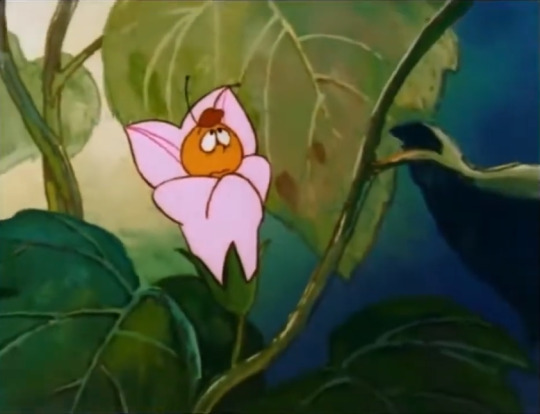
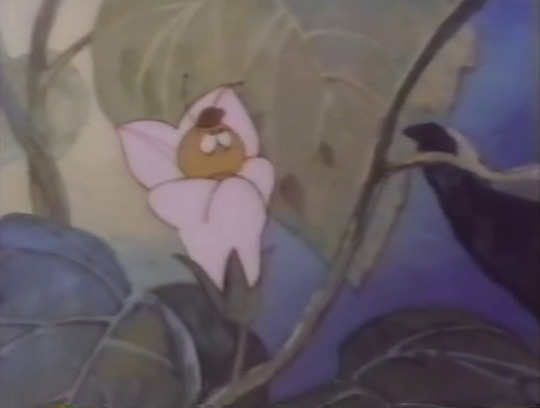




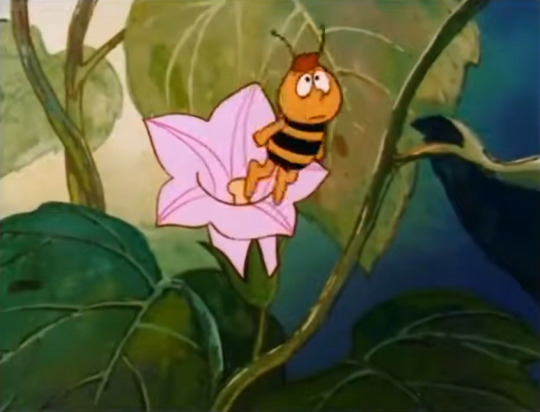

Maya the Bee: Willi in the Sonovision Dub vs. Saban Dub 🐝
Sonovision Dub - Left
Saban Dub - Right
I'm noticing the difference between the coloring and shading in both of these Maya the Bee dubs. I am also contemplating the other differences that exist between the Saban dub and the Sonovision dub of Maya the Bee as well. The nature scenes featured in this anime have always enchanted me, so I pay a lot of attention to its details. The details that distinguish one dub from the other make each one more intriguing to explore.
Each dub has its own beauty. The Sonovision dub has retro 70s appeal, which is especially due to its funky soundtrack. The Saban dub was modernized for the young audience of the early 90s. I immediately recognized that the voices, accents, and music scores featured in these dubs are very different from each other.
But still, as I was watching the Sonovision dub, I noticed that although the details were clear and good, something else was different: I distinctly remembered the coloring and shading of Maya the Bee being brighter in the Saban dub I watched as a child. Now that I've placed screenshots from the same scene (Willi enveloped in a flower) as featured in each respective dub, I can confirm that the Saban dub I saw did have lighter coloring and shading than the Sonovision dub.
I finished watching the Sonovision dub of Maya the Bee a little while back, so I'm watching what I can find of the Saban dub now. Yes, the details on the Sonovision dub's screenshots are clearer, but now that I've put them side by side with Saban dub screenshots, I see that the coloring and shading absolutely differ between the two.
Sonovision released their dub for the South African Broadcasting Corporation in 1980. Although the music composition in this dub is credited to Karel Svoboda, its voice actors remain unnamed and unknown. In the Sonovision dub, all of the characters speak with upper-class English South African accents.
I began watching the Sonovision dub on October 16, 2022. I finished watching the last episode of the Sonovision dub on January 7, 2023. The date I finished is significant to me because I was born literally 2 days after the Saban dub began airing on Nick Jr. (United States) on January 1, 1990. That dub's last air date on Nick Jr. was December 31, 1992.
Meanwhile, Saban was responsible for releasing their dub of Maya the Bee with Canadian voice actors from Montreal. That's the dub that 90s kids like myself grew up with. A significant amount of the episodes are considered lost media. I'm grateful to watch whatever remains of it because it gives me a cherished glimmer of happiness I had as a child.
The Sonovision dub is full of charm. Nonetheless, the Saban dub is the first anime I remember watching, so it will always hold a special place in my heart.
📖 Source: Dubbing Wikia
#maya the bee#willi the bee#sonovision dub#saban dub#anime#retro anime#retro anime aesthetic#anime dub#dubbing#nostalgia#anime diary#honey bee#bee#cottagecore#otaku#otaku girl#otaku life#geek#geek girl#geek life#my anime diary#old anime
10 notes
·
View notes
Text



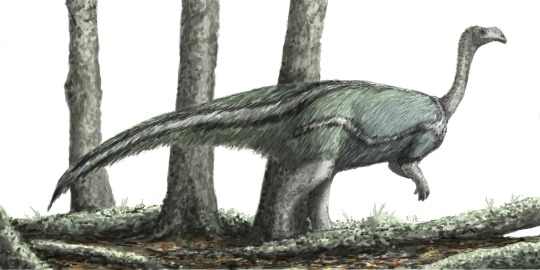
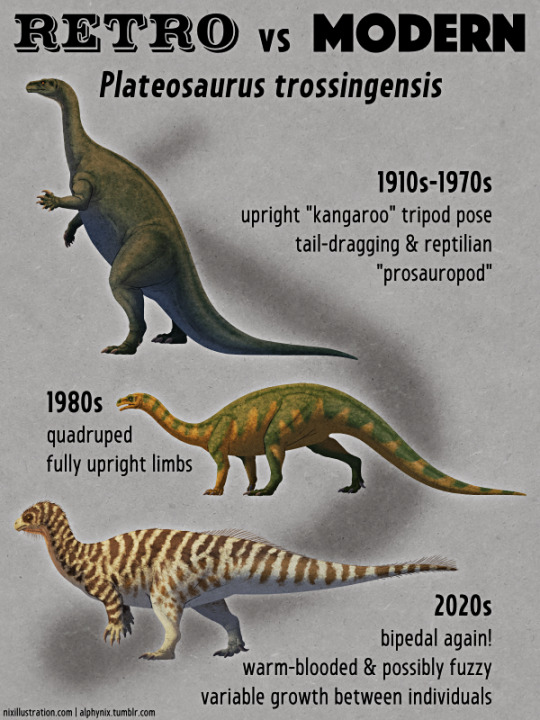
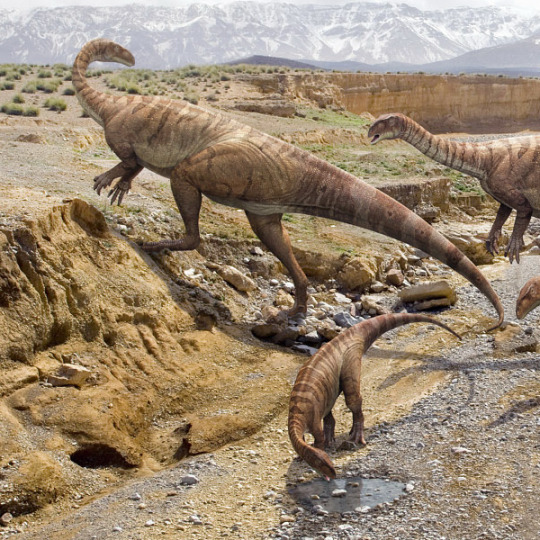




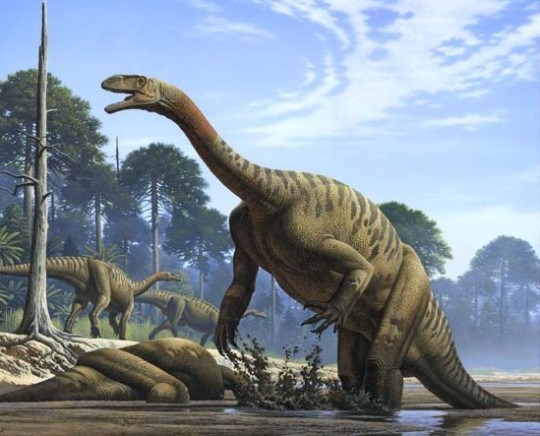
Plateosaurus is a genus of basal early sauropodomorph dinosaur aka a prosauropod, which lived throughout what is now Europe and possibly Greenland from the Norian to the Rhaetian of the late triassic some 214 to 204 million years ago. The first remains now known to belong to Plateosaurus consisted of parts of the legs and some vertebrae were unearthed in 1834 by physician Johann Friedrich Engelhardt at Heroldsberg near Nuremberg, Germany. He then showed them to palaeontologist Hermann von Meyer, who in 1837 designated them as Plateosaurus meaning broad lizard. This means that Plateosaurus is the fifth named dinosaur genus that is still considered valid. Since then the remains of well over 100 individuals have been recovered throughout Switzerland, France, Norway, and especially the German region of Swabia causing German palaeontologist Friedrich August von Quenstedt to nickname the animal Schwäbischer Lindwurm meaning the Swabian Dragon. Material referred to Plateosaurus has also been found in the Fleming Fjord Formation of East Greenland, however much of these remains have now been assigned to its own distinct genus of prosauropod called Issi. Although there remains some indeterminate material from the local still assigned to plateosaurs. Today 3 species are considered valid: P. trossingensis, P. longiceps, and P. gracilis. Unusual amongst dinosaurs, plateosaurs had a high amount in developmental plasticity with adult specimens reaching anywhere from 66 to 33ft (4.8 to 10m) in length and 1,300 to 8,800lbs (600 to 4,000kgs) in weight. Despite the great quantity and quality of fossils, Plateosaurs was for a long time a source of confusion and misunderstanding. Leading to there being considerable debate in regards animal's biology, taxonomic position, physical posture and behavior over the years. The modern understanding of these animals is that they were large obligate bipeds which sported small heads, long and flexible necks, sharp but plump plant-crushing teeth, powerful hind limbs, short but muscular arms and grasping hands with large claws on three fingers which were used for both defense and feeding. Plateosaurus likely lived in loose herds and feed upon a wide variety of vegetation, acting as the primary large herbivore of its environments, occasionally supplementing its diet with carrion, insects, or small vertebrates.
Art used above can be found at the links below
https://nixillustration.com/science-illustration/2022/retro-vs-modern-10-plateosaurus/
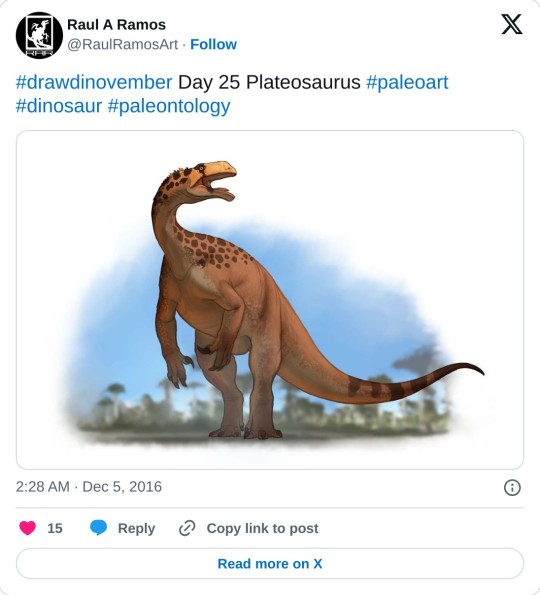
#pleistocene pride#pliestocene pride#mesozoic#dinosaur#dinosaurs#sauropod#prosauropod#sauropodomorpha#plateosaurs#dragon#triassic
5 notes
·
View notes
Text
Eddie's Best Things of 2022
Ok, I'm Eddie and here's the best of 2022.
Shout outs to getting kidney stones & covid week 1 of 2022! Truly an experience!!
Games? Plenty. Here we go.
#gotyforme Spider-Man PS4.
Why would I pick anything else? I threw aside my plan to 100% the Final Fantasy series. I completely put everything else on pause for this game. It made me smile. it made me cry. It was a love letter to all the admiration and comfort I find in Peter Parker.
Fighting GOTY?
This year gave me quite a few new options and some renewed passion for old games. Amidst the newfound love for Tekken, I series I wrote off entirely after Tekken 3; and the weekly fight nights in Street Fighter V, the boys brought in some competition, or some semblance of it; and the game that made me start questioning what a hyper-focus is, Marvel vs Capcom 2; I found such an absolute joy in...
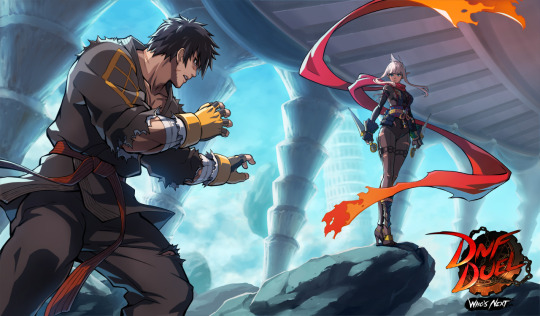
DNF Duel!
I'll be honest, I wrote a whole thing about this game I guess Tumblr didn't like it coz it's all gone. Anyways...
I think this is my first modern day kusoge. Several 50/50s, tons of movement options, and nearly infinite pressure. Only game I've gotten so comfortable in saying "Damn, I think I can break his guard and hit him with this really stupid easy 60% combo." In other words, holy shit - who made this for me?!
I truly enjoyed all the god awful things you can do to your opponents. Besides Tekken 7, it's the only game to piss me off even when I won. Alt-F4 was my friend sometimes. I really hate how much I love this game.
Shout outs to KUNO-ITCHY! She joins the ranks of "Eddie, come on" characters (Laura, Lidia, Magneto, Fox, Falco, and probably like Chrom). She carried me to Diamond. Carried me hard.




Next up?
Worst Game, 2022.
It was NFS: Unbound. I refunded it after 2 hours. Bought Mile Morales. I don't regret it. That's it.
Most Forgettable Game, 2022
3-way tie between Halo: Infinite, Multi-Versus, and Need for Speed (2015).
I don't have much to say. They were booted, we had some laughs, and we eventually stopped doing both those things. NFS2015 kind of gets a pass coz the handling was pretty good.
Ok, I'll just rapidfire the rest coz this is long.

Best NPC - Stan Lee, Spider-Man PS4. I cried, ok.
Best New Old Game (Retro, but new to me)- Money Idol Puzzle Exchange. Thanks, Griffin.
Best Old New Game (New to me, but not from this year)- Persona 5 Royal. Or maybe Sekiro, but that's...
Game that Pissed Me Off the Most - Sekiro. Jesus, fuck. I still can't fucking finish that game.
Most Played Street Fighter - 3rd Strike. Probably, but more importantly..
Most Nostalgic Based Ass-Kicking - Marvel vs Capcom 2. Jesus, I love this game.

The Worst Opponent - Andi in Tekken 7. Bro, "Your moves are faster" was the weakest rage-quit moment.
The Best Opponent - The 5-Minute Queues in DNF Duel.
Favorite Finish - Digimon World 3. Finally did it.

Best Tetris - Magical Tetris Challenge
Best Mod - Emudeck on Steam Deck
I guess that's mostly everything. Shout out to Hinokakera Chaotic Eclipse.

I was staring at this screenshot as I was thinking about my closing thoughts. This game is wild. She is naked.
Anyways. Good year overall, games wise. Not too many letdowns, mainly just Unbound. Next up, whenever I remember to do it...
Movies!
0 notes
Text
Future of Gaming: Recent Trends and Technologies
Future of Gaming: Recent Trends and Technologies
Here is a look at the trends and technological breakthroughs affecting the future of the gaming business. Gaming ttrends like Mini-Games, Retro Games, Social Games etc.
We usually don't anticipate technology to spark conflict. Older, more traditional trends are quickly supplanted by more contemporary ones.
Nevertheless, gaming often adopts these patterns quickly as novel experiences. In actuality, video games regularly make use of new technology and display it for the initial time.
Even with the considerable inconvenience the global outage produced, the gaming industry is still growing on a global scale. Video games are played by countless individuals every day, and this incredibly active business has given rise to a wide range of exciting technology developments.
The way businesses, marketers, and strategists profit from the greater interaction throughout many platforms is changing as various technology breakthroughs move forward. Here is a look at the trends and technological breakthroughs affecting the future of the gaming business.
Get started: Game development services
In addition to that, the world is developing quite quickly. Mobile gaming is the best place to go for hard data on how swiftly modern technology has developed over time.
It's undeniable that the gaming industry has seen a good proportion of advances in technology, from the earliest black-and-white 2D games like Pong (1972) to the first 3D game, 3D Monster Maze in 1981, as well as from straightforward 1st shooter games like Wolfenstein 3D (1992) to complex, life-like shooters like Battlefield 3. (2011).
All the gamers—casual and hardcore alike—have enjoyed the thrilling experience. The majority of us possess a list of ideal game outcomes for the future.
It's difficult to predict if they will materialize, but we may certainly extrapolate from the latest trend, which is also the entire idea of this write-up. The year 2022 is expected to further advance these technological developments.
In this write-up, we will be covering a few prominent gaming trends that will lead the industry in the future.
Latest Gaming Trends You Should Know

Guess it depends on how gamers engage with them, video games are frequently divided into trends or genres. Following are a few trends that may lead the future of gaming:
Mini-Games
In the video game Minecraft , minigames are prevalent. On-server minigames for Minecraft can require many plugins and complicated setups.
Additionally, certain mini-games are simpler to create on your own.
The following list of minigame categories all allows for simple creation with the vanilla Minecraft client alone, without the need for any add-ons or plugins. Each sort of game will challenge your cognitive abilities while rewarding your use of imaginative space and design.
Maintain an ongoing list of the modifications you wish to make while you test your game. Good designers evaluate their work as they develop it and seek out constructive criticism from others.
Arena Minigames
In Minecraft, there are several varieties of arena games. In addition to barriers, starting gates, and other things, these games are played in an arena.
There are several objectives in these games.
Visit Once: Unity Game development Services
PvP or PvE combat is the main feature of certain arena games. Players are given weapons like swords, arrows, armor, or sticks for PvP (Player vs Player) warfare.
They engage in combat with one other until one squad or one person is declared the winner. Player versus Environment (PvE) combat pits players against enemies known as mobs.
PvE arenas frequently have levels. A more difficult set of monsters spawns at the end of each stage.
Challenge Courses
Players can demonstrate their command of Minecraft on challenge courses. The courses' challenges can be finished at the players' own pace.
Making your own is far better than playing others' is.
One of the easiest difficulty levels to build at home is Minecraft Ice Minigolf. Ice minigolf follows the same regulations as regular minigolf, with the exception that packed ice is often used in place of something like the greens.
Take a "golf ball" and drop it on the ice; we like to do this with colorful wool. "Drop" is initially set to Q. Remember to think of an original Minigolf theme.
Adventure maps, Puzzles, And Dungeons
Overcoming a dungeon, an adventure, or a puzzle is the focus of certain Minecraft minigames. These games may make use of every technology a Minecraft maker has access to, but they typically give gameplay and plot equal weight.
Retro Games
The fad of the past is returning. Even though we have the tools to produce beautiful, lifelike images, programmers are producing 8-bit and 16-bit games in the vintage style more quickly than ever.
The only things we had at the time were these old pictures.
Have you ever thought about the specific qualities that define a game as being retro?
Let's go back to the last time you were using your outdated console to play a game. What is the duration of that game?
Explore Also: Blockchain Development Company
A minute-long excitement that transports you back to your youth is provided by retro games. There is nothing wrong with it, but there are limits to nostalgia.
You become weary of your old games once more when corporations overplay the nostalgia card.
Retro games come in a wide variety of formats, including arcade, console, and computer games. They can indeed be played on consoles, arcade cabinets, or PCs.
Social Games
A few years ago, Facebook's social gaming scene really took off. Play Farmville anymore? Words With Friends, perhaps? Regardless of how many of you are still playing, this was the height of social gaming.
There are still a lot of social gaming brands with substantial fanbase today, notwithstanding the decrease in the number of invitations to play these sorts of games.
But what exactly is social gaming? What sets social games apart from different game genres, and what renders them interactive? You can counter that a social game is just a game on Facebook. But it's not quite that easy.
Since not every game on Facebook is identical, what is it about playing games on various other social media platforms? Given its vibrant and skilled multiplayer community, might Call of Duty be considered a social game?
As we'll see, it might be challenging to describe social gaming. But it's important to understand this concept from the perspective of a sector that is constantly evolving.
Let's understand some additional gaming concepts in order to provide a more thorough definition of social games.
Casual Games
The majority of games you'll encounter on social media are clearly casual games. They don't take a lot of expertise or special abilities to be successful.
They tend to be played frequently but in brief periods and aren't particularly difficult technically. Consider any game you enjoy playing to pass the time on a 5-minute bus journey or in formal meetings.
Sharing
Social interaction is the other key component of social gaming. It's both like and unlike multiplayer in titles like Call of Duty.
In the strictest sense, social games are multiplayer, although they tackle multiplayer from a different angle. Intimate relationships amongst players are typically emphasized in social games.
The majority of social games include features like exchanging goods, giving and receiving praise, evaluating acquaintances, and welcoming fresh players.
In-Game Purchases
This approach to making money has worked well for gaming in this genre, even though it isn't included in every social game.
They are thus the ideal setting for the BUFF.
You are truly no longer obliged to spend your hard-earned money through transactions since BUFF gives you BUFF tokens while you play rather than in-game money.
Alternatively, you may just pay using BUFF coins. Because your gaming will have paid for itself, you won't require to be denied access to premium areas or the best in-game items.
Just keep playing and having fun. Leave out the rest.
Gaming Industry Innovation That Entrepreneurs Absolutely Should Know About
We usually don't anticipate technology to spark conflict. Older, more traditional innovations are quickly supplanted by more contemporary ones.

However, gaming often adopts these patterns quickly as novel experiences.
In actuality, games are often the first to adopt new technology and to show it off. These technologies are expected to evolve further in the next few years.
Here's what to look out for:
AR/VR In Gaming
When it comes to offering a really immersive first-person gameplay playing experience, augmented and virtual reality gaming are scarcely rivaled. The advent of Pokemon Go significantly increased interest in augmented reality games.
According to Industry ARC forecasts, the marketplace for AR and VR gameplay will hit $11.0 bn by 2026. The increase from 2022 to 2026 is preceded by a CAGR of 18.5 percent.
Hire Game Developers in India
The integration of AR and VR solutions into smartphones and other wearable technologies, as well as customer desire for immersive gaming experiences, are driving this rise. The Economist predicts a decline in the price of VR headsets over the coming years.
The use of VR gaming equipment, such as hand controllers and headgear, enables players to engage in interactive gameplay.
In contrast to a VR game where the player is completely submerged, AR places virtual scenery and noises over the player's actual surroundings. It is what further enhances the format's appeal and use.
The increased use of smartphones has made it easier for game makers to use augmented reality as a narrative tool.
Cross-Platform Gaming
Cross-platform gameplay is also another development that will shape the gaming industry in 2022. It hasn't always been easy to create games that are able to play on a variety of platforms and systems.
The main obstacles to cross-platform gameplay were rising prices and a lack of technology. However, in 2021, developers are working with gameplay codes to enable cross-platform playing a reality, giving players hope for the future.
Blockchain-Based Gaming
As it is obvious that these advancements are going to stay, developers are working to find ways to incorporate them into every part of our life, including gaming.
With increased interaction with the games offered, tipping and in-game purchases should become simpler. Blockchain technology will also contribute to creating a more secure environment for both developers and players.
Cloud Gaming
Every few years, your gaming setup needed to be updated if you wanted to play the newest games. A fresh tendency, though, could be taking hold.
Amazon, Microsoft, and Nvidia are a few businesses that currently provide cloud-based subscription services.
Users would simply use a streaming device like Chromecast or FireTV, saving them a lot of money. The processing is carried out on the cloud, much like streaming video, and the output is sent to a TV.
The Metaverse
The announcement by Facebook that it will invest billions of dollars in creating the metaverse, a realistic online setting where users may connect while working and having fun, has received a lot of attention. This kind of online gathering is not brand-new.
However, as game creators offer consumers unique experiences across new and well-known titles, Facebook's goal to grow and extend this online environment will bring new gaming trends to the fore.
Artificial intelligence (AI)
Robots can construct knowledge like humans thanks to computer methods called artificial intelligence (AI). In video games, artificial intelligence (AI) may learn to be unpredictable in a manner akin to that of a human player, outwitting human players.
The creation of video games could benefit from AI. AI is being tested by game makers to produce games that can change on their own in response to player responses.
For instance, an AI system can react to a player's actions by swiftly and automatically generating brand-new difficulties, characters, settings, and game components, establishing stages and difficulties for them to try to discover.
Wrap Up
To sum up, we covered the most recent gaming developments, their future consequences, and how they are affecting the mechanics of the IT sector as a whole. The gaming business as a whole will be affected by many more trends, but these are the ones that are now having the biggest impact.
In the last ten years, the gaming market has radically changed. The most important topics that we have examined are only expected to increase in importance over time.
The e-gaming sector is being targeted by both conventional and unconventional businesses, like Apple, Google, and Amazon. This heated rivalry will result in the creation of cutting-edge games that have never existed earlier.
We shall come across breathtaking gaming experiences brimming with social connection as digital gaming expenditure keeps rising. The only path ahead for creators is to take advantage of new trends and technologies, innovate, and make hyper-realistic games that are simultaneously affordable and very enjoyable.
If you want to build a cutting-edge gaming app , get in touch with Quytech , which has a wealth of knowledge in blockchain, AR/VR, and AI technologies and are waiting to assist you to build your unique gaming app and ensure it adheres to current trends.
Source: Future of Gaming Latest trends
0 notes
Photo


Monti Korbelle is back on the scene with a brand new studio effort: "Our Conclusion Is in Arizona"
November 2022 - Monti Korbelle has released another fantastic and richly nuanced release named "Our Conclusion Is in Arizona". All of the ingredients for an excellent sonic mix are all there, and this new studio work feels like a perfect example of what this talented artist is capable of.
Some musicians tend to get stuck to a single genre, but this is definitely not Monti Korbelle’s case. He feels quite comfortable in exploring different ideas and creative avenues, going for a diverse and one-of-a-kind feel. Sometimes, you’ve got to look back in order to move forward, and it feels like Monti Korbelle learned this valuable lessons, as his music has a retro twist in some ways, although it still feels fresh and unapologetically modern, unafraid to explore new territories and cover new ground with some incredibly cool arrangements and instrument ideas to spice up the mix.
Find out more about Monti Korbelle, and do not miss out on "Our Conclusion Is in Arizona". This release is now available on some of the best digital music streaming platforms, and it comes highly recommended to any fan of artists such as Holly Herndon, Jackson Wang, Francis Moon, Coldplay, and Mogli, only to mention but a few.
https://twitter.com/montikorbelle
https://open.spotify.com/artist/2UEEiw3iM1DqDG8oFzvooI
https://twitter.com/montikorbelle
We also had a chance to ask the artist a few questions: keep reading for more!
I love how you manage to render your tracks so personal and organic. Does the melody come first?
Answer:
Good art is a balance of unlimited comparisons, and with that there are required choices: polished vs. organic, autotuned vs. natural, conventional vs. experimental, full vs. mysterious. I often flip on the autotune effect because I like the sound it gives, but I at the same time experiment with ways to go beyond the restrictions autotune places to avoid a result that is dry and “manufactured.” There are numerous ways we can make a sound, but with each we have to make choices. If I choose a drum machine over a live drum-set recording, what messages am I conveying? Is there something less human about a digital synth when compared to the sound of a restaurant piano? You have to think about your answer, unless of course you are vehemently against electronic music in all of its forms. When a human becomes a creative with electronic tools, it is the responsibility of the human to show signs of humanity behind the curtain if that is the choice for the desired product.
Do you perform live? If so, do you feel more comfortable on a stage or within the walls of the recording studio?
Answer:
When I walk into an Austin 6th Street bar on a Thursday night to see a man sitting on stool with a microphone and an acoustic guitar, I have no desires to be this man. I’m confident this man, and others like him, feel, when the crowd of nine people or less show signs of wishing the music volume could be turned down so they wouldn’t have to shout while ordering a drink, a sense of worthlessness as he and others like him wonder if what they perform is not music, but rather just a loud atmospheric background noise to simply become a memory clouded or forgotten by “the audience.” We have to then turn to this question: what is a music artist? Are we slaves? Yes. While it is my firm decision to not contact the bar owner to sit in this same stool on the stage at this Austin 6th Street bar on a Wednesday so the few patrons can feel warm inside knowing they support a local artist by simply sharing a space for an hour with one, I too consider myself a slave. However, it is important to recognize that a true artist is free, and therefore the artist is free to choose what type of slavery to conduct on themselves. Even a commissioned painter is free to choose the pallet. Instead of subjecting myself in public in this manner, as a local music artist, a sideshow, publicly showing my face in hopes of converting these drunk people into Spotify streams so I have something to show for my effort, or maybe at least a dollar in the hat making me feel like I don’t separate far from the homeless man, also on 6th Street, doing the same thing I am but on the sidewalk with a saxophone, possibly with more talent than I have—instead I place myself in a metaphorical jailcell where I am not allowed to exit until I am satisfied with my portfolio, or in more pretentious terms, my “body of work.” I am the slave to myself, and in this dynamic, there are moments where I can trick myself to believe I am the master.
If you could only pick one song to make a “first impression,” which would it be and why?
Answer:
This depends on the person. My ex-girlfriend, as an example, hated all of my songs. She begged for me to quit. I’ve dodged ultimatums. Unnecessary compromises were made. There is not one song in my portfolio that I would choose to make a “first impression” with for this type of person as I would immediately be told that I am not worthy of creating anything and I should only be subjected to thoughts of guilt and shame. On the other hand, some people enjoy experimental alternative music, so for them I would probably recommend my song “Cry For Me.”
What does it take to be “innovative” in music?
Answer:
I’ve struggled with coming up for an explanation for where ideas come from for far too long, but for now I will settle on the idea of an ether. Ideas float around us like jellyfish in this invisible ether all around us, sometimes permeating through the skull like a sperm-cell fertilizing an egg, and it is the responsibility of the consciousness to either reject or accept this gift from the ether. From there, and this is crucial, we are responsible as primate creatures to not spoil this metaphysical gift.
Do you have any upcoming release or tour coming up?
Answer:
My next album will be an album of healing. On the side, I am working with collaborators for my album to come afterward, which will be an album of controlled insanity. I hope to convey a defined juxtaposition between these two albums, where the first is careful, intricate, simple while complex, and the second is something to be described as one of the strangest experiences ever had during an album listening session.
What is the best way for fans to connect with you online?
Answer:
DM me on Instagram. Pour your heart into my inbox. Let’s talk.
https://www.instagram.com/positivemonti/
0 notes
Photo

INTELLIVISION FIBS
by Super Train Station H
------------------------
Intellivision fans sigh
and say "here we go"
whenever discussion comes up
about that damn Amico.
Toothless vanity project,
fueled by avarice and ego
straight from the ambitions of one Tommy Tallarico,
integrity that melts under the slightest heat, like snow
barely completed games that aren't fit to be shown,
making podcasters get catty
at prototypes that look shabby -
clearly they're full of bugs,
dragging the Intellivision brand
straight through the false hype mud.
Mattel sure is glad they have no connection to this -
mismanaged brand revival console
that's an obvious miss.
Based on nostalgia,
but the historical games
from the 70's and 80's aren't on the list,
just uninspired recreations
that doom the project like Death's kiss.
The Blue Sky Rangers can't scramble their fighters to stop this -
there's a long line of partisans
ready to blindly defend it.
They were promised Tommy interviews and VIP access -
But access to what?
Access to one man's egotistical smelly butt?
Project goals don't get met,
but they toss it up to bad luck:
"Trust us, we're an experienced company -
but we're also a start-up."
"Remember our old glory days?
Well, we're back to delight the nation -
but this is our first product,
so please people, be patient."
Make up your mind!
I'm fed up!
And the excuses don't add up.
Blame coronavirus again?
Dang yo, I've heard enough.
Analogue Pocket made it out,
I know, today I played mine today on the bus.
Playdate shipped to gamers,
so in Panic we know we can trust.
And Evercade Vs. hit stores in a Blaze,
that's the way you make a system for actual vintage games.
Tommy wanted nostalgia,
and he went all out, as you'd expect
cause like in the old days,
Intellivision got beat to shelves by VCS.
The new Atari VCS is a joke with no future,
day one - it was dead,
but at least it tripped over the starting line
before Amico could make it out of bed.
Building a cult-like following,
while legitimate interest tapers,
no wonder low funds show
on investment proposal papers.
Point out Amico's problems
and you get called a "gaming racist",
because saying a video game sucks
is the same as genocidal hatred.
Tommy can't withstand hot takes,
but says his critics are snowflakes,
politicizing every little thing
makes his game system look lame.
Vilifies anyone that won't take a seat on his flat ride,
while people who stayed on board,
watch their pre-order dough get fried.
All they had to do was make an Intellivision mini-system,
make all the vintage games,
playable on modern televisions,
include overlays for replica keypad controllers,
and retro gaming fans would keep the money in-going.
But no,
they had to be big shots,
cause they have
big roller ambitions,
but making a product people want
was never part of their mission.
They made a solution to a fake problem about which no one complained,
then accused Nintendo Switch of having sex abuse games.
Wait? Really? Hold on -
This story's bigger than King Kong,
they spent German taxpayer funds on this damn bomb!
Foxes are wild beasts,
but "Finnegan Fox" looks tame,
and they tried selling people empty boxes with no games -
empty hope with nothing for the gaming public to see,
a hustle Nick Wilde would size up and say,
"No way, you lost me."
They said,
"Look at our games! You wanna play this today, we bet!"
and when people weren't impressed, they said,
"It's unfair to judge them yet!"
Which is it Tommy?
Between reality and his words there's a schism,
every claim breaks apart
like light through a bull prism.
It's sad that Intellivision's main modern exposure,
is bad drama, broken promises, and lack of composure.
I'll play the classic games,
and defend that strange old controller,
but sticking up for Amico
would be like trying to push a boulder.
It would be exhausting, and unfun, so why even try?
Intellivision Lives,
but this brand mismanagement needs to die.
------------------------
Thanks for reading!
And posted on 10-10-2022, the 2 year anniversary of this nightmare project's originally announced launch date.
PHOTO CREDIT:
Intellivision Productions (I refuse to link to them, at the risk that they might take your money in bad faith)
ART CREDIT:
https://www.furaffinity.net/user/keetahspacecat/
WHAT IS THIS EVEN ABOUT?
https://www.youtube.com/playlist?list=PL4T1sDYpnBr4R7or5khb4MTJGZaZdT4FU
0 notes
Photo

Retro vs Modern #22: Tyrannosaurus rex
Probably the most famous and popular dinosaur of all time, Tyrannosaurus rex is also the only species commonly known by both its full scientific name and its abbreviation T. rex.
1900s-1960s
Fragments of what we now know are Tyrannosaurus fossils were first found in the Western United States in the 1870s, but it wasn't until the early 1900s that a couple of partial skeletons were discovered and recognized as belonging to a new species of huge carnivorous theropod.
With its charismatic and memorable name meaning "tyrant lizard king" it was an immediate hit with the general public, portrayed as the "king of the dinosaurs" in pop culture and as the dramatic nemesis of Triceratops.
Like other bipedal dinosaurs of the time it was depicted in an upright kangaroo-like tripod pose, cold-blooded and lizard-like. Sometimes it was also shown with three-fingered hands, since its arms were poorly known for a long time – and while the closely-related tyrannosaurid Gorgosaurus was known to have had just two fingers, this wasn't confirmed for Tyrannosaurus until the late 1980s.
1990s
During the 1970s and the early Dinosaur Renaissance it became obvious that bipedal dinosaurs like Tyrannosaurus couldn't have stood so sharply upright without dislocating their hips and tail vertebrae.
Jurassic Park was influential in introducing this new corrected posture to the general public in the early 1990s, presenting a powerful and active predator with a more bird-like horizontal stance and its tail acting as a counterbalance. Reconstructions inspired by this portrayal became standard for Tyrannosaurus during the 1990s (although the old-style tripod remains in public consciousness even decades later), and while it didn't tend to get as heavily shrinkwrapped as some other species it was still common for a while to push its belly ribs in as much as possible to make its bulky body look skinnier and more "athletic".
The 1980s and 1990s were also a time when discoveries of new Tyrannosaurus specimens began to become much more frequent, improving knowledge of the species' anatomy, biology, and life history. Some, like Sue, Stan, and the Dueling Dinosaurs, would also unfortunately end up becoming highly controversial, tied up in legal disputes for years and sold for multi-million-dollar prices.
2020s
After the explosion of feathered non-avian dinosaur specimens from China in the mid-1990s, eventually the small feathered tyrannosauroid Dilong was discovered in the early 2000s, followed by the much larger-bodied Yutyrannus in the early 2010s.
While these tyrannosauroids weren't particularly closely related to Tyrannosaurus itself, the question of potential tyrant fuzz still began to loom, and for a while in the 2010s highly fluffy T. rex interpretations were popular in paleoart. But in the late 2010s a study of known skin impressions from Tyrannosaurus and several of its closer relatives showed that small pebbly scales were known from various parts of the body, and suggested that these particular dinosaurs were most likely primarily scaly. Sparser fluff was still possible on parts of the body, however, similar to the hair on modern elephants, and it's also possible that juveniles were much fuzzier.
(While this is disappointing for fans of huge fatbird T. rex, it's also a great example of the scientific process. The skin impressions hadn't ever been properly described before this point, and the scaly interpretation had mostly been an assumption. Speculative fluffiness prompted all the skin evidence to actually be consolidated, and now we know a lot more about Tyrannosaurus' potential outward appearance than we did before.)
Arguments about lips in theropod dinosaurs also went back and forth during the 2010s, with interpretations ranging from tight-skinned crocodilian-like snouts with exposed teeth to fleshy lizard-like lips similar to modern Komodo dragons. There's not really a consensus yet, but since most non-beaked tetrapods do have lips the safe bet is still that dinosaurs like Tyrannosaurus would have had them too.
Our modern view of Tyrannosaurus is a much chunkier animal than older interpretations, with more extensive soft tissue, properly-positioned belly ribs showing that it had a barrel-shaped pot-bellied body, and its tail being thicker-muscled than previously thought.
Living across western North America – then the island continent of Laramidia – during the very end of the Cretaceous, about 68-66 million years ago, it was one of the largest terrestrial carnivores to ever live. The very biggest known specimens are estimated to have been as much as 13m long (~43'), with the proportionally large head making up around 1.5m of that (~5').
Its skull was boxy at the back but narrow along the snout, allowing its forward-facing eyes to have hawk-like stereoscopic vision. Large fenestrae and a "honeycomb" of air spaces reduced the weight of the skull, while reinforced fused bones strengthened it, and Tyrannosaurus is estimated to have had an incredibly powerful bone-crushing bite force.
It had a highly developed sense of smell, and its hearing was geared towards low-frequency sounds. The texture of its skull bones suggests it may also have had thick toughened keratinous skin and bumps over its face, which might have been involved in head-shoving and headbutting behaviors.
Although proportionally tiny for its overall size, its arms were still rather beefy, with large areas for muscle attachment with "meathook" claws that may have been used to hold onto struggling prey.
As a heavily-built bulky carnivore it probably wasn't especially fast, and its legs were adapted for energy-efficient walking rather than running. It may have been a long-distance stalker, only using short bursts of speed in a final ambush – and like most large carnivores it would have also opportunistically scavenged on carcasses, too.
Specimens once argued to belong to a separate smaller species of tyrannosaur, "Nanotyrannus", are now generally accepted as actually being juvenile Tyrannosaurus. They show a surprising amount of physical change as these animals aged, starting out leaner-built with longer legs more suited for speed, slender more delicate snouts, and only developing the characteristic chunky adult proportions during a huge growth spurt in their mid-to-late teens.
Meanwhile, the latest big controversy over this dinosaur as of March 2022 (because there's always something) is a study proposing splitting Tyrannosaurus into three separate species: T. rex, T. imperator, and T. regina. It doesn't seem to be going down well, but much like the feather situation it probably at least means we're going to see a lot of further investigation over the next few years.
———
Nix Illustration | Tumblr | Twitter | Patreon
#retro vs modern 2022#science illustration#paleontology#paleoart#palaeoblr#tyrannosaurus#t rex#tyrannosauridae#tyrannosauroidea#theropod#dinosaur#art#retrosaurs#of course t rex was going to be in here somewhere#i had to do one eventually#'and then jurassic park happened' is the theme of the final three entries in this series#anyway i'm glad we finally stopped fatshaming T. rex and are finally letting it be its glorious chonky self again
7K notes
·
View notes
Photo










Published by grimoireofhorror.com and The Banshee 16/06/21
With E3's first full online event coming to a close, we thought we would do a quick rundown of the treasure trove of horror games under development and set for release across the upcoming 2021/2022 period.
There were a plethora of horror themed videogames being advertised, from Triple A studios to small indie dev teams alike, coming up for release over the next year (bar any technical problems). Below we have more information about these upcoming horror releases.
Salt and Sacrifice
Salt and Sacrifice is the next game being produced and published by Ska Studios, it is somewhat of a follow-up to their previous 2016 cult hit Salt and Sanctuary (Without being called a sequel).
Salt and Sacrifice follows in a similar, souls-like style gameplay and an analogous art style. It focuses on on side scrolling action, heavy RPG elements and gigantic, terrifying monsters to battle against. Salt and Sacrifice is coming to PS5 and PS4 with a release window of 2022.
The Anacrusis
The Anacrusis is a four person co-op FPS developed by Stray Bombay, gameplay very much styled on Left 4 Dead's fast-paced zombie action.
Set on an alien spaceship, the game sees four players team up to blast through hordes of alien monstrosities in this '70s themed alien romp. The Anacrusis is set to be released 'later this year' on Xbox one, Xbox Series X/S and Windows.
Blood Hunt
Blood hunt is a new third-person battle royale game being developed by Shark Mob. The game takes place in Prague, Czech Republic and follows the Vampire: The Masquerade universe. The different underground vampire sects battle in the back alleys and rooftops for superiority whilst trying to avoid breaking the masquerade, calling in Entity strike teams.
With the use of firearms, melee weapons and special magical abilities, players will fight to see who is the strongest among them. This will hopefully breathe new life into the Battle Royale genre (especially with the promise of no pay-to-win services). Blood hunt will be released for free in late 2021 on Windows.
House of Ashes
House of Ashes is the third game in The Dark Pictures Anthology developed by Supermassive Games. House of Ashes is an interactive horror game similar to their previous titles Man of Medan and Little Hope. The story follows a small unit of soldiers as they discover a subterranean ruins and the horror they uncover.
The gameplay seems to follow the same formula as the others in the series, playing more as an interactive movie rather than a videogame. With the improvements in graphics, it will be interesting to see how this holds up to the previous games. House of Ashes has been given an October 2021 release on PS5, Xbox Series X/S, PS4, Xbox One and Windows.
Back 4 Blood
Back 4 Blood is a four person co-op FPS being developed by Warner Bros and Turtle Rock. The game is being worked on by the same team as the legendary Left 4 Dead and is therefore a spiritual successor rather than a clone like so many others.
Back 4 Blood will have similar, horde killing action to its predecessor, demonstrating an AI director who will control the difficulty level for a unique playthrough each time. The game will be released October 2021 for PS5, Xbox Series X/S, PS4, Xbox One and Windows.
Evil Dead: The Game
Evil Dead: The Game is a 5v1 online co-op survival game under development by Boss Team Games and published by Sabre Interactive. The game seems to be a sequel to the hit TV series Ash vs Evil Dead.
The gameplay seems comparable to similar titles such as Dead by Daylight and Friday the 13th, though from in-game footage, some new mechanics will be added and the visuals will be improved upon. Evil Dead: The Game is expected to be released some time this year for PS5, Xbox Series X/S, PS4 Xbox One and Windows.
Elden Ring
Elden Ring is the latest game from developer FromSoftware and published by Bandai Namco. FromSofware are known for their popular Souls series and Bloodborne games.
Elden Ring will continue the developer legacy of combining frustratingly tough combat, beautiful gothic landscapes and intricate lore to weave an engrossing, in-depth story with the help of writer George R R Martin. First being revealed at E3 2019, the game had slipped into obscurity with developers releasing no information afterwards until now. Elden Ring is said to be released January 2022 for PS5, Xbox Series X/S, PS4, Xbox One and Windows.
Rainbow Six: Extraction
Rainbow Six: Extraction is the latest in Tom Clancy's round-based counter terrorism tactical FPS developed by Ubisoft Montreal. The game was first announced in 2019, where it has gone through a name change since then due to the pandemic.
The game takes its ultra-realistic combat and pits your squad against a range of vicious alien creatures instead of the standardly vague terrorist threat. Featuring previous operatives such as Hibana, Ash and Tachanka, hopefully more info on other characters will be released in the near future. Rainbow Six Extraction will be released in September on PS5, Xbox Series X/S, PS4, Xbox One and Windows and will feature cross-play between systems.
Broken Pieces
Broken Pieces is an action-packed investigative and adventure video game set in France. The game is developed by two person team Elseware Experience.
The game immerses players in the shoes of Elise, following an unexplained paranormal phenomenon, Elise is stuck, alone, in a time loop that inevitably forces her to relive the same day over and over. Broken Pieces has a very Silent Hill feel with a heavy emphasis on investigation and puzzle-solving. Broken Pieces is set to be released June 2022 on PS5, Xbox Series X/S, PS4, Xbox One and Windows.
Doki Doki Literature Club Plus
Doki Doki Literature Club Plus is a rerelease of the classic psychological horror visual novel developed by Team Salvato. Featuring hundreds of new unlockable HD images, six brand new side stories and twelve new music tracks being added to the game, there should be enough for new and old fans alike to look into this new release.
Doki Doki Literature Club Plus will be available at the end of June for PS5, Xbox Series X/S, PS4, Xbox One, Nintendo Switch and Windows.
Signalis
Signalis is a fixed-perspective survival horror developed by two person team Rose Engine and published by Humble Bundle.
The game is heavily influenced by the early Resident Evil and Silent Hill games (including somewhat low-poly graphics), but with an anime visual style that doesn't distract from the horror. Although the game has been in development since 2014, the pair are still not comfortable setting a release date but have confirmed the game will be released to Windows.
Ghostwire: Tokyo
Ghostwire: Tokyo is an action adventure horror game developed by Tango Softworks, known for their well renowned Evil Within series and published by Bethesda Entertainment.
The gameplay is very action orientated, exhibiting strong underlying horror element due to 99% of Tokyo’s population vanishing without a trace in just a single day. Those few that remained are then plagued by the “Visitors” who take the form of various Japanese yokai using first-person magic based combat. Ghostwire: Tokyo is set for release October 2021 to Playstation, release on other platforms is set for 2022.
Faith: The Unholy Trinity
Faith: The Unholy Trinity is a pixel horror game being developed by one man team Airdorf Games and released by New Blood Interactive.
Faith is a horrifying puzzle game inspired by MS-DOS and ZX Spectrum games. Including simple mechanics and very effective scares, this three chapter story, despite being short, will be a rush of nostalgia for old school gamers. Episodes one and two of Faith are available on Itch.io for Windows right now, Faith: The Unholy Trinity will be available on Steam soon.
S.T.A.L.K.E.R. 2: Heart of Chernobyl
S.T.A.L.K.E.R. 2: Heart of Chernobyl is the latest to be released in the first person survival horror series developed by GSC Game World. The game returns the players to 'the zone', the area surrounding Chernobyl nuclear power plant.
The upgraded graphics have completely transformed the S.T.A.L.K.E.R. world from GSC's previous game S.T.A.L.K.E.R. Call of Pripyat released all the way back in 2009. Continuing with an overall supernatural overtone, S.T.A.L.K.E.R. 2: Heart of Chernobyl looks to be a great edition to the franchise. The game is to be released April 2022 to Xbox Series X and Windows with rumours of other platform released later on in the year.
Eldest Souls
Eldest Souls is a pixel art, souls-like boss rush RPG developed by Fallen Flag Studios and published by United Label. The Old Gods have unleashed a great desolation upon the world, turning farmlands to desert and rivers to dust. You, a lone warrior, must explore the vast, forgotten Citadel in search of the Old Gods. Your quest? To slay them all.
Eldest Souls take focus on the most difficult parts of Souls-type games, the bosses. Each one having its own unique challenge to overcome, and suitable rewards depending on whether you are victorious. Eldest Souls is set for release July 2021 on PS5, Xbox Series X/S, PS4, Xbox One, Nintendo Switch and Windows.
Vampire The Masquerade: Swansong
Vampire The Masquerade: Swansong is a story-driven RPG set in modern-day Boston, during an era where vampires have gone from hunters to being hunted. The game is being developed by Big Bad Wolf and published by Nacon.
Swansong's gameplay has still not been released but it is believed to be closer to the original games style of gameplay as opposed to Bloodhunt's battle royale style. The trailer has revealed one of three playable characters, Leysha, who is a member of the Malkavian clan. Vampire The Masquerade: Swansong is due to be released late 2021 on PS5, Xbox Series X/S, PS4, Xbox One, Nintendo Switch and Windows.
Project Warlock 2
Project Warlock 2 is a retro first person shooter with a heavy pixelated graphics being developed by indie studio Buckshot Software and published by Gaming Company.
The game is a sequel to the teams original 2018 title Project Warlock. Similar to their first title, the game is reminiscent of early 3D pc shooters of the 90's such as Quake and Unreal Tournament, but has a heavier emphasis on the bit-crushed low poly graphics. This looks like an incredibly fast paced action horror which shooter fans should get a kick out of playing. Project Warlock 2 will be released for Windows, early access will begin in July 2021 with a full release set for some time 2022.
Death Trash
Death Trash is a post-apocalyptic cosmic horror RPG being developed and published by Crafting Legends. Humans left the planet Earth in search of the cosmos and settled on a brand new planet: Nexus. It is a mysterious planet filled with eldritch abominations and a deep lore for the player to discover.
The game is a pixel art, top-down roleplaying game where your choices can either make or break the game, showcasing the ability to befriend these creatures rather than just battle everything you encounter. Death Trash will be available for Windows in early access from late July 2021.
A Plague Tale: Requiem
A Plague Tale: Requiem is a direct sequel to 2019's survival game A Plague Tale: Innocence both developed by Asobo Games and published by Focus Home Group.
The game will be a continuation of the prequel's story, following the struggles of Amicia and Hugo through rat-infested environments in search of a new home. A Plague Tale: Requiem will be available on PS5, Xbox Series X/S and Windows sometime in 2022.
Somerville
Somerville is an upcoming cell-shaded sci-fi horror puzzle/platform game developed by Jumpship .
Although the trailer didn't give too much away, the story seems to follow a family as they struggle to escape an unknown catastrophic event. The game looks incredibly akin to Limbo from the similarly oppressive landscapes and general feel. Somerville is set for release on Xbox Series X/S, Xbox One and Windows sometime 2022.
Replaced
Replaced is a 2.5D dystopian sci-fi action platformer developed by Sad Cat Studios and published by Coatsink. You play as R.E.A.C.H, an AI trapped inside a human body against its will, in an alternate 1980s America.
Including a mix of extreme violence, slick visuals and stunningly detailed pixel art style, the game is a feast for the eyes. Despite not technically a horror game, I had to include it in this list. Replaced will definitely scratch an itch if games like Death Trash raised you hype levels. Replaced will be released on Xbox Series X/S, Xbox One and Windows sometime 2022.
Pioner
Pioner is a first person survival MMORPG developed by Russian developers GFA Games. You act as a former operative who survives in a world after a technological disaster. A Soviet island isolated from the mainland by a large-scale technogenic anomaly. So, now you have two primary objectives: find (and rescue) your comrades while investigating the mystical MOGILNIK station.
The game seems like a fusion between the S.T.A.L.K.E.R series, the Metro series and DayZ. Players enter a huge open world environment, littered with supernatural creatures and disturbances. The game will have both PVP and PVE elements to gameplay as well as full character and weapon customisation. However, the trailer didn't specify a release date, it is hoped to be released around the start of 2022 for Windows (though this is liable to change).
Chernobylite
Chernobylite is a first person survival horror being developed by The Farm 51 and published by All In! Games. The game sees the player try and survive Chernobyl's harsh exclusion zone (sense a pattern here?), the new trailer has included a look at the heist it all builds up to—getting past an occupying military force to break into the Chernobyl Nuclear Power Plant. You're there to find out what happened to your beloved Tatyana.
The game seems very similar to Bethesda's Fallout series in gameplay, setting and tone, especially considering the inclusion of base building and furniture crafting for you and your crew to plan your heist in style and comfort. Chernobylite is available for PS4, Xbox One and Windows July 2021, With PS5 and Xbox Series X/S expected to be released later on in the year.
Red Solstice 2: Survivors
Red Solstice 2: Survivors is a real-time strategy survival game and the sequel to Red Solstice. The game is being developed by Ironward and Published by 505 Games. You control a squad of soldiers fighting STROL mutants on Mars, trying to help find a cure to save mankind and stop this virus in its tracks.
The gameplay is essentially a real-time XCOM game, mutants interchanged from alien invaders of earth. The game come with a single player and online 8 player co-op missions, allowing your friends to get deep in the tactical elements of the game. Red Solstice 2: Survivors will be available for Windows as soon as June 17th.
Mechajammer
Mechajammer is an isometric cyberpunk horror RPG being developed by Whalenought Studios and published by Modern Wolf.
The gameplay takes influence from classic 80's films such as Escape from New York and Robocop. Although there are strong similarities with other isometric RPG such as Fallout 1 & 2, that have their roots in TTRPGs. Mechajammer unfortunately lacked a release date in the trailer but will be released for Windows.
Scorn
Scorn is a first person survival horror adventure developed by Belgrade and published by Ebb. The game is designed around the idea of ‘being thrown into the world’. You are isolated and lost inside this dream-like world based on the techno-sexual artwork of the amazing H.R Giger.
A 14 minute gameplay trailer was revealed during Microsoft/Bethesda showcase, displaying foreboding, oppressive landscapes littered with highly detailed body horror and grotesque creatures. The game will require environmental puzzles to be solved to forward progression to the next horrifying area. Scorn is to be released on Xbox Series X/S and Windows some time this year.
RedFall
Redfall is an open-world first person shooter developed by Arkane Studios and published by Bethesda. The quaint island town of Redfall, Massachusetts, is under siege by a legion of vampires who have blocked out the sun and cut the island off from the outside world.
The gameplay looks akin to Left 4 Dead, as well as a few other games being showcased this year, a mix of single player or four player co-op. What does differ is the special ability that each character has, from telekinesis to a robot companion to aid in the fight of the besieging vampire threat. Redfall is set to release mid 2022 for Xbox Series X/S and Windows.
Danganronpa: Decadence
Danganronpa is a series of horror visual novels developed by Spike Chunsoft and published by NIS America as early as 2010. The series is set around the affluent high school, Hope's Peak Academy. A group of lucky (or Unlucky) students are subject to a death game in order to graduate.
The games, originally released for the PSP and Vita, are now being released for the Nintendo Switch. Danganronpa: Decadence will bundle Danganronpa: Trigger Happy Havoc Anniversary Edition, Danganronpa 2: Goodbye Despair Anniversary Edition, Danganronpa V3: Killing Harmony Anniversary Edition, and Danganronpa S: Ultimate Summer Camp together as a physical copy or available separately on Nintendo's Estore set to release later this year.
Fatal Frame: Maiden of Black Water
Fatal Frame: Maiden of Black Water is a survival horror game developed by Koei Tecmo and published by Nintendo all the way back in 2014. Set in the fictional Hikami Mountain, a place infamous for suicides and spiritual happenings connected with local bodies of water. The story follows three different protagonists: Yuri Kozukata, who has the ability to bring people back from the shadow world into the real world; Ren Hojo, an author and friend of Yuri who goes to the mountain to research his new book; and Miu Hinasaki, the daughter of recurring Fatal Frame protagonist Miku Hinasaki.
The game is a remaster of the original game for modern and next-gen consoles with new costumes and photo modes that weren’t in the original, as well as updated visuals. Fatal Frame: Maiden of Black Water will be released for PS5, Xbox Series X/S, PS4, Xbox One, Nintendo Switch and Windows.
After The Fall
After The Fall is a four person co-op VR horror shooter developed by Vertigo Games. The game sees you and up to four other players battle a Left 4 Dead style hoard of zombies with special infected in a post apocalyptic world.
The main aim of the dev team was to have the game be compatible for all VR headsets on the market, allowing for the difference in quality and movement sensitivity. After The Fall will be released on the Oculus Quest, PlayStation VR and PC VR headset.
Inscryption
Inscryption is a narrative focused, deck building psychological horror developed and published by Daniel Mullins Games, developer of Pony Island and Hex.
Unfortunately, not much of the story was revealed, but this game looks deeply terrifying. Your only defence are the cards in your possession, each obtained through terrible means. Inscryption will be available some time this year for Windows.
Despite the lack of actual game play for some of the bigger, more anticipated games, I believe that this years E3 has some pretty interesting releases for the next year.
I, for one, am very excited for some of the pixel horror games being released such as Mechajammer, Replaced and Death Trash (I'm incredibly hyped for Death Trash). Although, some of the bigger titles like Vampire the Masquerade: Swansong, Back 4 Blood and Fatal Frame: Maiden of Black Water have piqued my interests.
At least, in some way, the return of E3 is some return to normality whilst still in the height of the pandemic. I am positive by next year, the quality of these events will improve and we can return to the high quality showcase of gameplay E3 is known to provide.
1 note
·
View note
Photo

Retro vs Modern #04: Archaeopteryx lithographica
Archaeopteryx lithographica was first discovered in the 1860s, still in the early days of our understanding of dinosaurs, and was a timely example of the sort of transitional form first proposed by Charles Darwin only a couple of years earlier. For over a century it was a famous icon of evolution, and has been part of a lot of weird drama over the years – it's been central to arguments about bird origins, was accused of being a fake, and one specimen even vanished under mysterious circumstances.
1860s-1970s
At the time of its discovery Archaeopteryx was actually fairly quickly accepted as demonstrating an evolutionary link between dinosaurs and birds… but sadly this view wasn't to last.
In the early 20th century opinion shifted towards birds not being dinosaurs but instead descended from "thecodont" reptiles (what we'd now call early archosaurs and pseudosuchians). And so for a long time Archaeopteryx ended up being depicted as simply the "first bird", a half-reptile half-avian curiosity.
Reconstructions of it from this time period varied from very good to kind of awkward depending on how much the artist was trying to emphasize its reptilian ancestry, commonly featuring wonky-fingered wings and a scaly lizard-like face. It was also frequently depicted with bright gaudy parrot-like coloration, with a specific yellow-and-blue color scheme becoming a "paleoart meme" so prolific that it would eventually inspire the design of a Pokémon.
2020s
After decades of stagnation the dinosaur-bird link was resurrected in the early 1970s, with the discovery of the bird-like Deinonychus kicking off the Dinosaur Renaissance. Along with the explosion of spectacularly feathered dinosaur fossils from China in the mid-1990s, Archaeopteryx finally began to be properly presented as a feathered dinosaur again.
Continued study of the known Archaeopteryx specimens in the last couple of decades has vastly improved our knowledge of what this animal would have looked like, revealing previously unknown features like the exact plumage arrangement on its wings and legs, and even potentially some details about its coloration.
Living in southern Germany during the Late Jurassic, about 150-148 million years ago, Archaeopteryx inhabited what was then an island archipelago in a shallow tropical sea. It grew to around 50cm long (~1'8") and was almost entirely covered with pennaceous feathers, externally probably just looking like a long-tailed bird.
It had broad wings, with asymmetrical flight feathers similar to those of modern birds but with more extensive coverts, some of which were probably a matte black color. Its legs also sported long "feather trousers" and a "raptor"-like hyperextensible second toe, and there was a slight forked shape to the tip of its tail.
Arguments have gone back and forth about how well it was actually able to fly, with current thinking being that it made short bursts of active flapping flight a little like a modern pheasant – but since its shoulder joints were less mobile than those of modern birds it must have used a different sort of flight stroke to generate lift.
It's no longer always considered to have been the "first bird", or even to have been the direct ancestor of any modern birds. Instead it represents an offshoot lineage of early birds (or very-bird-like dinosaurs) that was just one part of a still-expanding flock of feathery fossil discoveries.
———
Nix Illustration | Tumblr | Twitter | Patreon
#retro vs modern 2022#science illustration#paleontology#paleoart#palaeoblr#archaeopteryx#avialae#bird#maniraptora#theropod#dinosaur#art#i unironically still like the yellow-and-blue archie color scheme even if it's completely unrealistic
5K notes
·
View notes
Photo

Retro vs Modern #11: Brontosaurus excelsus
Discovered in the Western United States during the 1870s, in the early years of the Bone Wars, Brontosaurus excelsus was one of the most complete sauropod dinosaurs known at the time.
1900s-1970s
In the early 1900s the genus name Brontosaurus was declared invalid and it was reclassified as a species of the very-closely-related Apatosaurus, renaming it to Apatosaurus excelsus – but this change took decades to be recognized outside of scientific literature, and by that time the "Brontosaurus" name had already stuck in pop culture. With the prominence of the name's use in early 20th century museum displays and its charismatic meaning of "thunder lizard", it rapidly became one of the most famous and recognizable dinosaurs to the general public.
Like most sauropods of the time Brontosaurus was generally portrayed as a large bulky lizard-like creature with an arched back, thick elephant-like legs, and a long dragging tail. Opinions on its neck posture varied over time, ranging from low-slung and horizontal to highly vertical, and it was commonly depicted wallowing lazily half-submerged in swamps due to sometimes being considered too big to easily support its own weight on land.
And along with spending most of the century with the wrong name, Brontosaurus also spent most of it with the wrong head. While a slender Diplodocus-like skull had been found close to the rest of an Apatosaurus skeleton in the early 1900s, it was rejected by some paleontologists and both Brontosaurus and Apatosaurus were instead given boxy Camarasaurus-like skulls that were thought to be more fitting for such big beefy-necked sauropods.
2020s
The Dinosaur Renaissance in the late 20th century completely revolutionized the understanding of sauropods and their biology. They were dragged out of the swamps and put properly back onto dry land, reinterpreted as active animals with their long tails held up off the ground and bird-like air sacs lightening their bodies.
The correct skull shape for Brontosaurus and Apatosaurus was also finally recognized in the late 1970s, and during the the 1990s and early 2000s a very horizontal neck posture became the standard depiction for this type of diplodocid sauropod. But by the 2010s this was being argued as biomechanically wrong – animals usually hold their necks at a much higher angle than the bones alone would suggest, and sauropods almost certainly did the same.
And then in 2015 the name Brontosaurus was reinstated as valid after all, in a massively thorough analysis of the diplodocid family that found enough physical differences between Brontosaurus and Apatosaurus to justify them both being separate genera again.
So our modern view of Brontosaurus excelsus (formerly known as Apatosaurus excelsus, even-more-formerly known as Brontosaurus excelsus) is a large sauropod that grew to around 22m long (72'). It lived during the Late Jurassic, about 156-146 million years ago, at a time when the supercontinent of Pangaea was starting to break apart and much of Western North America was a warm and semi-arid "Jurassic savanna" environment.
Its head was small and fairly delicate, similar to that of Diplodocus, atop a wide deep neck with chunky vertebrae. It had a deep chest and stout limbs, with its hands being semi-tubular pillars with a single "thumb" claw, and its feet having three large curved claws. Its tail made up over half its body length and was relatively slender, tapering into a long whip-like tip that may have been able to make loud cracking sounds like a bullwhip.
It was probably capable of briefly rearing up to reach higher vegetation, and small juveniles may even have been able to run on just their hind legs.
Soft tissue impressions from other diplodocids show keratinous spines running along the top of their tails, and complex variation in the sizes and shapes of scales across different parts of their bodies – so Brontosaurus may have been similarly ornamented.
———
Nix Illustration | Tumblr | Twitter | Patreon
#retro vs modern 2022#science illustration#paleontology#paleoart#palaeoblr#brontosaurus#apatosaurus#diplodocidae#sauropod#sauropodomorpha#dinosaur#art#retrosaurs#beefy boys#yes the modern bronto's color scheme is 'candy corn'#no i will not be explaining
3K notes
·
View notes
Photo

Retro vs Modern #05: Ichthyosaurus communis
Fossilized ichthyosaur bones have been found for centuries, but were initially misidentified as being the remains of fish, dolphins, and crocodiles. More complete skeletons began to be discovered in the early 19th century – particularly by pioneering paleontologist Mary Anning – and Ichthyosaurus communis was one of the first species of these ancient "fish lizards" to be scientifically recognized.
1830s-1870s
Early reconstructions of ichthyosaurs in the 1830s depicted flippered crocodile-like animals with long straight eel-like tails and strangely shrinkwrapped features, showing the sclerotic rings of their eyes and the internal bones of their flippers as highly visible externally. They were also frequently portrayed as being amphibious, hauling themselves out of the water to bask.
By the late 1830s impressions of smooth scaleless skin had been found, and specimens with tail-tips that were always "broken" in the exact same place were interpreted as evidence of the presence of some sort of paddle-like tail fin. The 1850s Crystal Palace Ichthyosaurus statues show this slightly updated version, along with a low dorsal ridge on their backs reminiscent of a beluga whale.
2020s
From the 1880s onwards the discovery of exceptional ichthyosaur specimens preserving whole body outlines revealed a fully aquatic streamlined shape, a triangular dorsal fin, and a crescent-shaped vertical tail fluke. Numerous examples of fossilized pregnant females also showed that ichthyosaurs gave live birth rather than laying eggs.
This highly dolphin-like version of ichthyosaurs quickly caught on and became the standard depiction into the early 20th century, frequently showing them as highly active animals – swimming in groups, chasing fish and ammonites, and leaping dramatically out of the water like their modern cetacean counterparts. While we don't actually know if they were social or acrobatic like dolphins, it was still a surprising and refreshing contrast to the increasingly lumpy and sluggish depictions of non-avian dinosaurs that were happening around the same time.
Actual further paleontological study on ichthyosaurs was scarce for decades, however, with a general attitude that the group was already scientifically "complete" and there wasn't much new or interesting left to learn about them anymore. It wasn't until the late 20th century that they began to have their own "ichthyosaur renaissance" alongside the dinosaurs, with a sharp rise in research in the last few decades bringing us a lot of new information about their diversity and biology.
Ichthyosaurus communis was just one of several species in the Ichthyosaurus genus, living during the Early Jurassic, about 196-183 million years ago, in the shallow tropical seas of what is now Europe. About 3.3m long (~11'), it was adapted for high-speed long-distance swimming like a modern tuna, and it probably had a large keeled peduncle on the sides of its tail.
Bone structure and isotope analysis show that ichthyosaurs were all warm-blooded. One exceptional specimen also preserves an insulating layer of cetacean-like blubber, along with some evidence of its coloration: overall darker on the top and lighter on the underside in a countershaded pattern.
(I've given this reconstruction some speculative disruptive camouflage, too.)
Some of the preserved pigmentation has enough microscopic detail to show what appear to be branched melanophore cells associated with the ability to change color – suggesting that ichthyosaurs may have been able to actively darken and lighten their coloration like some modern lizards.
———
Nix Illustration | Tumblr | Twitter | Patreon
#retro vs modern 2022#science illustration#paleontology#paleoart#palaeoblr#ichthyosaurus#ichthyosauridae#ichthyosaur#marine reptile#art#retrosaurs#blubber#chub-blubs#potentially *color changing* blubbery ichthyosaurs!#the communist ichthyosaur#seize the marine reptiles of production
3K notes
·
View notes
Photo

Retro vs Modern #23: Spinosaurus aegyptiacus
Spinosaurid teeth were first found in the 1820s in England, but were misidentified as belonging to crocodilians. It wasn't until nearly a century later that Spinosaurus aegyptiacus was discovered and recognized as a dinosaur – and it would be another century after that before we really started to learn anything about it.
1910s
The first fossils of Spinosaurus were discovered in Egypt in the 1910s. With only a few fragments of its skeleton known it was an enigma right from the start, hinting at a large and very strange theropod dinosaur with crocodile-like teeth, an oddly-shaped lower jaw, and elongated neural spines on its vertebrae that seemed to be part of a huge sail.
A few possible extra fragments were found in the 1930s, but overall these few pieces were all that was known of Spinosaurus for a long time.
The fossils were kept in the Paleontological Museum in Munich, Germany,a building that was severely damaged during a bombing raid in World War II. Many important specimens were destroyed, including Spinosaurus, and only the published drawings and descriptions of the bones remained.
So for the next several decades Spinosaurus remained a very poorly-understood mystery. During this period it was generally depicted as a generic "carnosaur", often modeled on something like Megalosaurus, in the standard-for-the-time tripod pose and with a Dimetrodon-like sail on its back.
Interestingly a 1930s skeletal reconstruction shows Spinosaurus with an unusually long torso and fairly short legs, details that are surprisingly modern despite the retro posture.
1990s
In the 1980s some partial snout bones from Niger were recognized as having similarities with the jaw of Spinosaurus. Around the same time the fairly complete skeleton of Baryonyx was discovered, and along with further spinosaurid discoveries in the mid-to-late 1990s a decent idea of what Spinosaurus might have looked like began to emerge.
It was reconstructed with a long kinked crocodilian-like snout, a ridged bony crest in front of its eyes, an S-curved neck, and large thumb claws on its hands – an interpretation that was heavily popularized by Jurassic Park III in the early 2000s, bringing this enigmatic dinosaur to public attention and portraying it as a fearsome super-predator bigger than Tyrannosaurus.
2020s
Despite attempts to locate more complete Spinosaurus remains, only fragments continued to be found, and it remained a frustratingly poorly-known species even into the early 2010s.
Finally, in 2014, almost a full century after it was first described and named, Spinosaurus started to reveal its secrets with the announcement of the discovery of the most complete skeleton so far, discovered in the Kem Kem fossil beds in Morocco. Its body was still only partially represented, but it included skull fragments, part of a hand, a complete leg and pelvis, some sail spines, and several vertebrae from the neck, back, and tail.
And nobody was expecting what these pieces revealed.
It had a very long torso and proportionally short stumpy legs, and was reconstructed with a huge distinctive "M-shaped" sail on its back. Its feet had flat-bottomed claws and its "dewclaw" toe was enlarged into an extra weight-bearing digit – adaptations for spreading its weight over soft muddy ground, and suggesting its feet may also have been webbed. Initially it was also presented as possibly being quadrupedal, due to how far forward its center of mass seemed to be, reviving an odd idea from the late 20th century.
Along with its long crocodile-like head and conical teeth, this was interpreted as evidence it was a semiaquatic fish-eating swimming animal – potentially making it the first known semiaquatic non-avian dinosaur. Spinosaurids had been suggested to be specialized piscivores before, especially since Baryonyx had been found with fish scales in its stomach, but they were generally assumed to be more like modern grizzly bears, wading into water to hunt but not being habitual swimmers. Spinosaurus' weird croco-duck proportions, however, seemed like they might be much more suited to watery habitats than to the land.
Since Spinosaurus had become a popular dinosaur with the general public by that point, the discovery was big news – and a big controversy for a while. It was so bizarre that some paleontologists were skeptical of the radical new interpretation, wondering if the measurements of the skeleton were correct or if the short legs were even from the same individual or the same species as the rest of the bones.
After a while the new proportions were accepted as fairly accurate, and over the next few years attention turned to instead figuring out just how this animal worked and how aquatic it actually was. An earlier isotope analysis of its teeth supported a semiaquatic lifestyle similar to crocodiles and turtles, but a buoyancy study argued that it might not have been able to dive below the water suface and its sail made floating unstable – but also found that its center of mass was closer to its hips than previously calculated, suggesting it could walk bipedally after all.
Then in 2020 came another surprise: more of the tail of the new specimen had been found, and it was just as weird as the rest of Spinosaurus. Its tail was a huge vertically flattened paddle-like fin supported by long thin neural spines and chevrons, resembling a giant eel or newt more than a dinosaur and also giving some more weight to the idea that it was a swimmer.
Our modern view of Spinosaurus is still evolving, and likely to be full of even more surprises in the future as we discover more about this unique dinosaur. But we at least know it lived in what is now North Africa during the Late Cretaceous, about 99-93 million years ago, and whether it was a swimmer or wading generalist predator it was one of the largest known theropods to ever live, estimated to have reached around 16m long (~52ft).
While the "M-shaped" sail reconstruction has been popularized by the recent discoveries, the exact shape of this structure is still unknown. Like with other sailbacked animals it's also not clear what it was for, with ideas including temperature regulation, visual display, supporting a fatty hump, and a potential hydrodynamic adaptation.
EDIT: And while I was working on this entry (late March 2022) I missed that another study had just come out with more anatomical support for swimming Spinosaurus!
———
Nix Illustration | Tumblr | Twitter | Patreon
#retro vs modern 2022#science illustration#paleontology#paleoart#palaeoblr#spinosaurus#spinosauridae#carnosaur#theropod#dinosaur#art#retrosaurs#'and then jurassic park happened' is the theme of the final three entries in this series#let spinosaurus be weird#crocoduck
3K notes
·
View notes
Photo
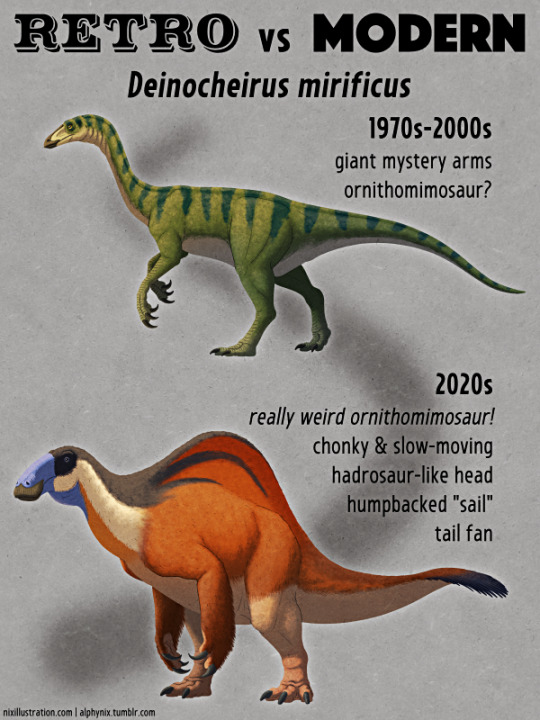
Retro vs Modern #20: Deinocheirus mirificus
Discovered in Mongolia in the mid-1960s, and named in 1970, Deinocheirus mirificus was a famous paleontological mystery for over 40 years.
1970-2000s
For a long time all that was known of this dinosaur was a few fragments and an enormous pair of arms – some of the largest of any known theropod at 2.4m long (7'10") – inspiring its name meaning "wonderful terrible hands".
Initially it was classified as a new type of carnosaur (which was something of a wastebasket group at the time), but similarities with the "ostrich-mimic" ornithomimosaurs were soon noted in the early 1970s. And despite some paleontologists trying to link Deinocheirus to the similarly big-armed therizinosaurs over the decades, the ornithomimosaur interpretation seemed to have won out by the early 2000s.
Depictions of Deinocheirus during this time period were highly speculative and reflected the uncertainty over its evolutionary relationships, varying from giant carnosaurs to therizinosaur-like forms to "Gallimimus but bigger" – or sometimes simply showing a hilarious pair of monster-arms reaching in from out-of-frame. Many popular dinosaur books just gave up entirely and only illustrated the known fossil material unreconstructed, and an iconic photograph of Mongolian paleontologist Altangerel Perle standing between the arms was commonly used to emphasize the sheer scale of the bones.
2020s
In the early 2000s attempts to find more fossil material at the original discovery site had only turned up a few additional fragments, including some belly ribs with evidence of having been bitten by a Tarbosaurus – suggesting that the specimen represented the scattered dismembered bits left behind by a feeding carnivore, and that the rest of the carcass might not even have fossilized.
But then between 2006 and 2009 a team of international paleontologists working in Mongolia found a couple of unusual partial skeletons at sites that had been looted by fossil poachers. While parts like the skulls and feet had been taken, the two specimens were still fairly complete and one still had enough arm material left to clearly identify it as Deinocheirus.
When the discovery was announced at the 2013 Society of Vertebrate Paleontology conference it was massive surprise to most of the paleontological community, confirming that Deinocheirus was indeed an ornithomimosaur, and that it was an incredibly weird one. Heavily-built, it was a much chunkier animal than its other relatives, and most surprising of all it had a humped "sailback" formed by long neural spines on its back vertebrae.
Then things got even better.
And stranger.
A "weird skull" had been spotted in the private fossil trade in Europe in 2011, along with some hand and foot material that perfectly matched the missing pieces of one of the new Deinocheirus specimens. The fossils were acquired and donated to a Belgian museum, and then finally were repatriated to Mongolia in 2014, filling in the rest of Deinocheirus' appearance with a suitably surprising head to go with the rest of its body.
We now know Deinocheirus lived about 70 million years ago during the Late Cretaceous, in what is now the Gobi Desert but at the time was a river-delta-like environment with numerous river channels, shallow lakes, and mudflats.
It grew up to about 11-12m long (~36-39') and had a long narrow skull with a wide beak and a deep lower jaw – resembling a hadrosaur more than an ornithomimosaur – and it had a rather small brain for a theropod of its size, proportionally closer to that of a sauropod. Its fairly weak jaw muscles suggest it mainly fed on soft vegetation, possibly foraging for aquatic plants in bodies of water like an enormous duck. Gastroliths in its gut helped to grind up its food, and the remains of fish in its stomach suggest that it was also somewhat omnivorous.
Its characteristic huge arms were actually one of the least strange things about it, and were actually proportionally smaller compared to its body size than other ornithomimosaurs. They were heavily muscled, though, with large curved claws, and may have been used to dig up food from mud and soft soil or to pull clumps of vegetation closer.
Its skeleton was highly pneumatized, full of lightening air sacs, but it was still a very big and bulky animal with relatively short legs that suggest it was rather slow-moving. Its feet resembled those of both hadrosaurs and tyrannosaurs, with blunt claws and adaptations for heavy weight-bearing in a bipedal stance.
The large sailback may have been a display structure, and the tip of its tail resembled a pygostyle and so may have sported a fan of feathers. The rest of its body was probably feathered similar to what's known from other ornithomimosaurs, although potentially more sparsely due to its huge size.
———
Nix Illustration | Tumblr | Twitter | Patreon
#retro vs modern 2022#science illustration#paleontology#paleoart#palaeoblr#deinocheirus#ornithomimosauria#theropod#dinosaur#art#retrosaurs
2K notes
·
View notes
Photo

Retro vs Modern #21: Deinonychus antirrhopus
Deinonychus antirrhopus was one of the most significant dinosaur discoveries of the 20th century, kicking off the Dinosaur Renaissance and the recognition of the evolutionary link between maniraptoran theropods and modern birds.
1960s
The first remains of this species were discovered in North America in the 1930s, but at the time the fossils weren't officially described or named. It wasn't until the 1960s that more specimens were found in Montana, representing at least three preserved individuals, and paleontologist John Ostrom recognized that there was something very special about this dinosaur.
In contrast to the prevailing view at the time that theropods were all upright tail-dragging "sluggish lizards" this was clearly a highly specialized and active predator, with a huge sickle-shaped claw on each foot and a long stiff tail for balance – inspiring its scientific name's meaning of "counterbalancing terrible claw".
And while the very first reconstruction of Deinonychus might seem retro to modern eyes, at the time it was revolutionary and it went on to become an iconic representation of the species for the next couple of decades. Drawn by Robert Bakker, who was Ostrom's student at the time, it depicted a lizard-like creature with its body held in a horizontal pose and its tail held out straight behind it. Its head was portrayed as more domed than we now know Deinonychus' skull to have been, and its neck was up in an alert posture while the animal ran at full sprint, with its sickle-claws held up away from the ground to keep them sharp.
A few years later further discoveries showed a highly bird-like pelvis and hands very similar to those of Archaeopteryx, triggering the Dinosaur Renaissance reinterpretation of dinosaurs as active warm-blooded animals, and the revival of the 19th century idea that they were the ancestors of birds.
1980s-1990s
As the "birds are dinosaurs" idea began to gain acceptance with increasing amounts of anatomical evidence, some paleontologists in the 1980s began to also suspect that highly bird-like dromaeosaurids like Deinonychus might have also been feathered. Some reconstructions during this time showed this to varying degrees, particularly those drawn by Bakker and by Gregory Paul – but it didn't really catch on more widely at first, for one very big reason:
Jurassic Park happened.
Dromaeosaurs hadn't been well-known dinosaurs to the general public before that point, but the 1993 JP "raptors" were an instant hit in pop culture. Physically based much more on Deinonychus than on Velociraptor, and exemplifying the renaissance view of dinosaurs in major media for the first time, the movie's fully scaled and oversized version of these animals dominated popular depictions for years afterwards. Even the most rigorous and anatomically accurate artwork showcasing their bird-like features still usually kept them completely naked to retain that familiar reptilian appearance.
Most 1990s attempts at any feathering tended towards being as sparse as possible – often along with the shrinkwrapping typical for the era – at best being decent for the time but what we'd now deride as "half-assed", and at worst being "a few token quills on the back of the head".
Deinonychus fossils found in association with Tenontosaurus were also interpreted as being evidence of cooperative pack hunting behavior during this time, and it became a common paleoart meme to depict the large herbivore being constantly swarmed by ravenous raptors.
2020s
The mid-1990s discovery of fully-feathered dinosaurs like Sinosauropteryx in China, followed a few years later by raptors with wing-feathered arms like Sinornithosaurus, gradually began to put the fluff back onto dinosaurs like Deinonychus.
(…At least in reasonably scientific paleoart. The much much stronger and ongoing resistance from popular culture is far too big a subject to get into here. But maybe, just maybe, we're finally hitting a turning point there?)
Early attempts at properly feathering dinosaurs were a bit awkward, usually looking rather like a bunch of scruffy greasy hair glued onto a scaly raptor, a dinosaur wearing fuzzy pajamas, or like the old "bird-lizard" depictions of Archaeopteryx. Even into the early 2010s some paleoart memes were still common in depictions of dromaeosaurs, but increasingly better understanding of their anatomy and plumage arrangements over the last decade or so has brought us to a much more birdlike interpretation of these animals – with paleoartists like Emily Willoughby being especially influential in popularizing the modern view of dinosaurs like Deinonychus.
We now know Deinonychus lived during the Early Cretaceous, about 115-108 million years ago, in what is now the Mountain West and South Central United States. Up to around 3.4m long (11'), it stood about 1m tall (3'3"), similar in size to a large dog.
It had blade-like teeth in its jaws, and forward-facing eyes with stereoscopic vision. Its three-fingered arms would have been covered by wing-like feathers, and its tail probably had feathers all the way along its length and was stiffened but not totally inflexible.
It may have used the sickle-claws on its feet to pin down struggling prey, eating it alive while flapping its wings and waving its tail for balance. And while often depicted as an extremely fast-runner, its leg proportions and foot anatomy suggest it was actually built more for walking and had an especially strong grip strength in its feet, trading speed for power and probably being more of an ambush predator – often being compared to a "giant ground-hawk".
Pack hunting has been called into question recently, too, arguing that the Tenontosaurus sites may actually represent crocodile-like or Komodo dragon-like behavior with mobs of scavenging individuals congregating at a carcass. But other evidence from trackways and Utahraptor does offer potential support for pack behavior in raptors, so it's still open to interpretation.
———
Nix Illustration | Tumblr | Twitter | Patreon
#retro vs modern 2022#science illustration#paleontology#paleoart#palaeoblr#deinonychus#dromaeosaur#raptor#maniraptora#theropod#dinosaur#actual pointy birbs#art#retrosaurs#'and then jurassic park happened' is the theme of the final three entries in this series
3K notes
·
View notes
Photo
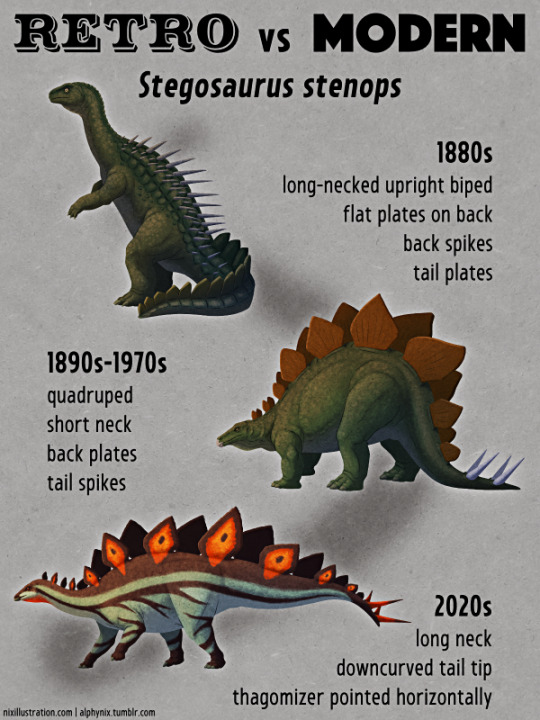
Retro vs Modern #13: Stegosaurus stenops
The first known stegosaur fossils were found in England and South Africa between the 1840s and 1870s, but these dinosaurs weren't properly recognized as a highly distinctive group until the discovery of Stegosaurus itself in North America during the late 1870s.
1880s
The first Stegosaurus reconstructions were based on fragmentary and disarticulated fossil material, and its life appearance was very poorly understood. Initially it was depicted as a bipedal long-necked animal, with its plates laying flat against its back like a turtle shell, numerous spikes across its back, and more plates running along its tail.
1890s-1970s
Better skeletons of the species Stegosaurus stenops were discovered in the late 1880s, and by the 1890s stegosaur anatomy was becoming clearer. Reconstructions quickly adopted an arch-backed body shape with a tiny head and drooping tail, short semi-sprawling forelimbs and long hindlimbs, and with the plates now properly upright on the back and the spikes at the end of the tail.
Stegosaurus' unique appearance rapidly made it one of the most famous and recognizable dinosaurs to the general public. Its comical-seeming tiny head and even tinier brain also unfortunately ended up contributing to the prevailing early 20th century attitude that dinosaurs were sluggish and unintelligent, with the myth that it needed a "second brain" in its hips to control its huge body becoming a popular notion for quite some time.
The exact arrangement of the iconic back plates and tail spikes was uncertain for several decades, with early versions in the 1890s having up to eight tail spikes and a single row of plates. This was then updated in the 1900s to a double row of symmetrical plate pairs, and by the 1920s the standard arrangment had soon become an alternating two-row pattern with the tail spikes reduced to four – a layout that's still considered correct today.
2020s
In the second half of the 20th century a combination of numerous new stegosaur species from China and the Dinosaur Renaissance began to revise the way Stegosaurus was understood, bringing it into a fully upright posture with its head and tail held high, and recognizing the convergently sauropod-like anatomy of its hands and feet.
But something still wasn't right.
Compared to other known stegosaurs, Stegosaurus itself was starting to seem… rather weird. Its short neck, short forelegs, giant plates, sloping back and high rump were much more exaggeratedly proportioned than any of its relatives.
This was finally resolved in the 2010s when a near-complete specimen nicknamed "Sophie" was thoroughly described – and revealed that Stegosaurus' proportions had been wrong the whole time. All previous skeletal reconstructions had been composites, put together from remains of multiple individuals that had all been different ages and sizes, and in the process had heavily distorted our idea of what this animal actually looked like.
Our modern view of Stegosaurus is now a much more typical stegosaur than before. It lived during the Late Jurassic, about 155-145 million years ago, across the Western and South Central United States (with a possible additional occurence in Portugal), alongside several other iconic dinosaurs of the "Jurassic savanna" like Brontosaurus, Diplodocus, and Allosaurus.
It grew up to around 9m long (~30ft), and had a small head with a long narrow snout, with a toothless beak at the front of its jaws and small peg-shaped teeth further back. Bony ossicles lined the underside of its neck, possibly providing chainmail-like protection to its throat, and its skin was covered in tiny pebbly scales interspersed with "rosettes" formed around slightly larger oval scales. Its neck was longer than previously thought, more in line with other stegosaurs, and its torso and hind legs were a bit shorter, making its posture more horizontal and its back less arched.
The actual function of the large back plates is still uncertain. Ideas about them being defensive armor (and speculation about them even being moveable!) have mostly been discounted at this point, since they were actually relatively fragile – although their keratinous covering may have had a fairly sharp edge. Thermoregulation has been a popular explanation for many decades, with blood vessel impressions in the plates being proposed as evidence they were used as "radiators" to prevent overheating like the ears of modern African elephants.
But currently the most likely primary plate function is thought to be visual display, with the large plates increasing the perceived size of Stegosaurus either to intimidate predators and rivals or to impress potential mates. If this was the case then they may have also been strikingly colored and patterned in life.
Meanwhile the "thagomizer" on its tail actually does seem to have been a weapon, with injuries to that area of the body being fairly common, and several Allosaurus fossils have been found with puncture wounds the exact size and shape of Stegosaurus spikes. Articulated specimens have also shown that the tail curved downwards at the tip, holding the thagomizer with the spikes pointing horizontally outwards and backwards.
———
Nix Illustration | Tumblr | Twitter | Patreon
#retro vs modern 2022#science illustration#paleontology#paleoart#palaeoblr#stegosaurus#stegosauridae#stegosauria#stegosaur#thyreophora#ornithischia#dinosaur#art#retrosaurs#i personally like the idea of eyespots on the plates#just rows of giant eyes staring at you
3K notes
·
View notes
Photo
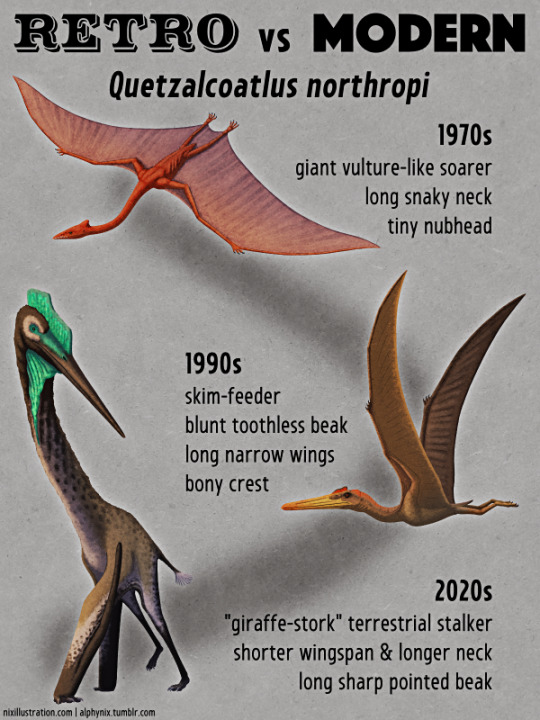
Retro vs Modern #19: Quetzalcoatlus northropi
Named after an Aztec deity and often called "the largest animal to ever fly", Quetzalcoatlus northropi is probably the most famous large pterosaur after Pteranodon – but despite its popularity for a long time we actually knew very little about it.
1970s
Discovered in Texas in the United States during the early 1970s, the first known fossils of Quetzalcoatlus were just a few giant wing bones, along with several partial skeletons of smaller individuals which at the time were thought to be juveniles.
But although it was given its charismatic name in 1975, the fragmentary nature of the find and it only being given a brief non-formal description meant it was very poorly understood at the time. Worse, the known fossil material was notoriously difficult for other paleontologists to study for several decades afterwards, with the museum housing it often refusing access requests entirely or demanding promises of total secrecy from anyone who was actually allowed to see it.
Most pterosaurs at the time were thought to be soaring seabird-like fish-eaters, but this huge species had been discovered in an inland environment. So Quetzalcoatlus was interpreted as being a huge vulture-like scavenger, with early reconstructions based on this idea ending up highly speculative due to the lack of good anatomical information. A common paleoart meme in the 1970s and 1980s depicted it with a long snake-like neck, a bizarrely tiny head, snaggly teeth, and a small nub-like crest.
1990s
In the mid-1980s Quetzalcoatlus was recognized as belonging to the newly-discovered azhdarchid lineage, a group with extremely long necks, toothless beaks, and long legs – although these pterosaurs were also rather poorly-known until more complete specimens were found in the mid-to-late 1990s.
Reconstructions during this period were considerably less demonic, reflecting the changing ideas about pterosaurs at the time. Quetzalcoatlus became sleeker and more bird-like, depicted with long narrow wing membranes, its neck held in an S-curve, its legs sticking out straight behind it in flight, and sometimes pycnofiber fuzz on parts of its body.
(…And sometimes there was excessive shrinkwrapping.)
During the early 1990s Quetzalcoatlus was also often shown with a blunt chunky beak based on fossil jaws found in west Texas, but in 1996 these remains were determined to belong to a different pterosaur. At the same time more material of the "juveniles" suggested they actually represented an entire second species of Quetzalcoatlus, about half the size of Quetzalcoatlus northropi, with partial skulls showing evidence of a bony crest on the head.
Quetzalcoatlus was also interpreted as a skim-feeder during this time, thought to fly along just above bodies of water with its lower jaw trawling over the surface, snapping up any fish it contacted.
2020s
The skimming hypothesis was widely accepted until 2007, when a detailed study showed that it was physically impossible for any pterosaurs to have actually fed that way. Based on their anatomy and known habitats azhdarchids like Quetzalcoatlus were subsequently reinterpreted as highly terrestrial predators, spending a lot of their time stalking around on all fours snagging prey in their huge beaks like a stork with the proportions of a giraffe.
A full technical description of the known fossil material had been promised since the early 1980s, but decades had passed and by the 2010s it still hadn't been published. The specimens continued to be inaccessible, information was still under heavy embargo, and what little had been published in the 1970s and 1990s was argued to be sparse enough and undiagnostic enough that it was starting to be genuinely unclear if Quetzalcoatlus northropi was even a valid species name at all.
Finally, finally, after over 40 years, a whole collection of papers about this pterosaur were released in 2021 – and in a refreshing contrast to the many years of secrecy and hoarding they were all free and open access. The second species finally got a name, Quetzalcoatlus lawsoni, and the genus as a whole is now properly and officially defined, instantly going from dubious and almost unknown to one of the most complete azhdarchids so far.
The study isn't without its issues or controversy, particularly in regards to some of its retro-seeming interpretations of Quetzalcoatlus' posture, proportions, and launch mechanics. But since the publication means that the fossils are finally unrestricted to other researchers, there's probably going to be plenty more studies and arguments and new discoveries about it in the future.
While Quetzalcoatlus northropi is still only known from fragments, the new knowledge about its smaller relative means we now have a much better idea of what it was probably like. It lived at the very end of the Cretaceous period, about 68-66 million years ago, and is currently known just from Texas – but it probably ranged much further than that, since azhdarchids are thought to have been able to fly for potentially thousands of kilometers at a time using energy-efficient thermal soaring.
It was one of the largest animals known to have been capable of powered flight, but not necessarily the largest ever. Some past Quetzalcoatlus wingspan estimates got ridiculously over-enthusiastically huge, in some cases up to to 21m (69'), but modern estimates based on better knowledge of azhdarchid proportions suggest something shorter-winged and much closer to 10m (33') – and some other azhdarchids are now thought to have had similar or possibly even slightly larger wingspans.
Still, Quetzalcoatlus was very big, and when standing on all fours it was probably similar in size and shape to a modern giraffe, about 6m tall (~20') with at least half of its height just being its neck. It had limb proportions more like an ungulate mammal than most other pterosaurs, suggesting it was highly adapted for walking and running around on the ground – but it could also catapult itself up into the air using its powerful forelimbs to take flight.
It would have been a ground-stalking predator similar to some modern storks and ground hornbills, using its long sharply pointed beak to snatch up any smaller animals it could fit into its mouth. Since its Texan habitat was a semi-arid "fern prairie" dominated by the titanosaur Alamosaurus, hatchlings and small juveniles of this sauropod may have made up a major part of Quetzalcoatlus' diet.
———
Nix Illustration | Tumblr | Twitter | Patreon
#retro vs modern 2022#science illustration#paleontology#paleoart#palaeoblr#quetzalcoatlus#azhdarchid#pterosaur#art#retrosaurs
2K notes
·
View notes